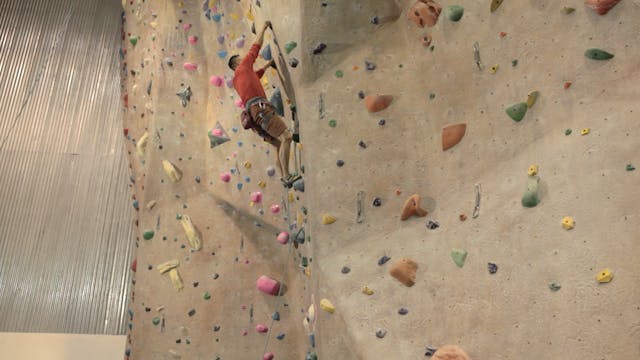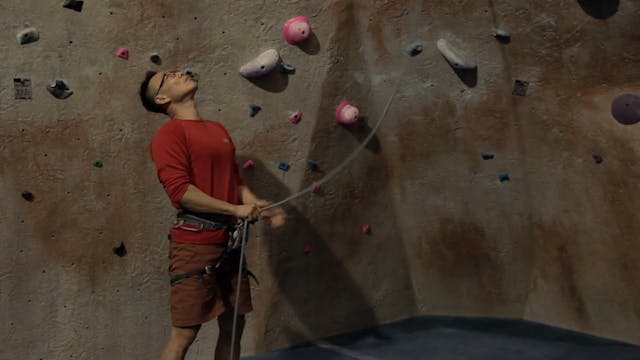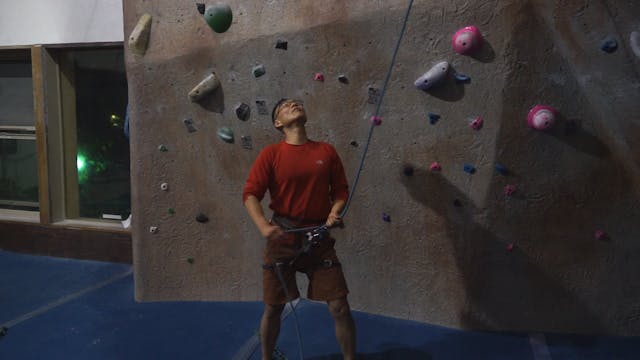Gym Lead Climbing: 8. Danger Zones
Gym Lead Climbing
•
1m 47s
“Danger Zones” a lead climber should consider when climbing:
1. The first three quickdraw clips are often the most dangerous section of the climb because of ground fall potential.
2. Identify crux moves as early as possible, so you are clipping from a better position or safer stance.
3. Know when to clip above your head to minimize risk by reducing fall potential. For example, clipping above your head before a crux move.
The main “danger zone” consideration for the belayer:
1. The belayer should always stand close to the wall so that, should the leader fall, the belayer is pulled up (and not into) the wall surface. While belaying close to the wall, also try to stand near the first quickdraw, to eliminate awkward angles of pull. The rope should flow up to the leader at a natural (minimal) angle, versus a severe angle away from the first quickdraw to the belayer.
We hope you found this video helpful. Feel free to comment below with questions or thoughts!
Please remember, climbing is inherently dangerous. Climb at your own risk.
Up Next in Gym Lead Climbing
-
Gym Lead Climbing: 9. Lead Falling
Falling while on lead happens, and it’s okay! It means you are pushing yourself, and learning.
Here are a few considerations when falling while on lead:
1. Be aware of your last draw. This determines direction of swing, and how far your fall will take you.
2. Know where the rope is, in c...
-
Gym Lead Climbing: 10. Lead Belaying
Lead belaying is an advanced skill, requiring the belayer on the ground to be very in tune with the climber as they lead up the wall.
Proper lead belaying considerations:
1. The lead belayer is typically responsible for rope management. This means flaking the rope into a proper stack, in th...
-
Gym Lead Climbing: 11. Lead Belay Sta...
In our other Lead Belaying videos, we mentioned that an ideal belay stance helps position the belayer as close to underneath the first draw as possible (while trying to minimize potential of the lead climber crashing into the belayer, if the leader were to fall).
There are two main safety reas...


